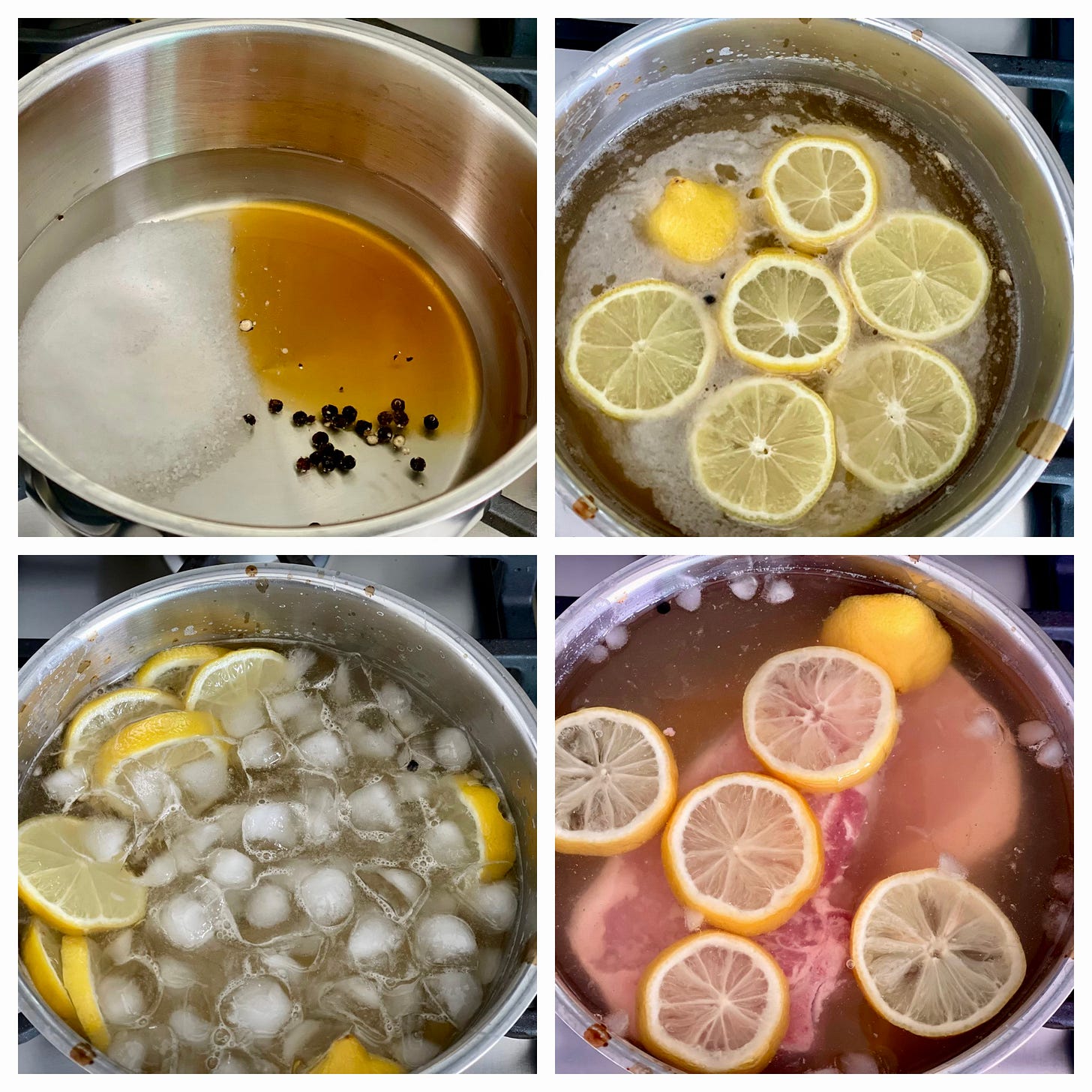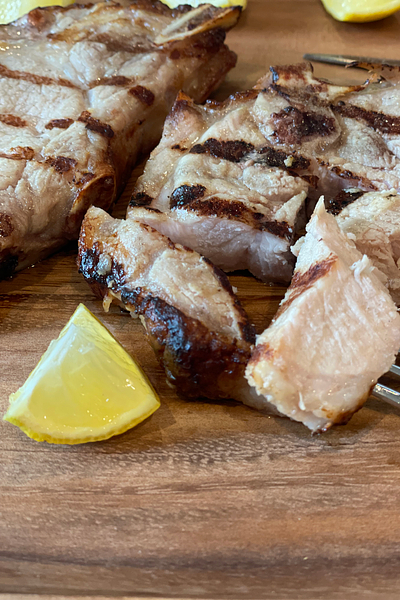BRINE YOUR SWINE
AU: Happy Spring Y’all! Even if you’re still in the cold weather, know that the days are getting sunnier and longer, and the buds are starting to pop all over. We’re about to POP with excitement, because Spring means it’s time to start cooking ERRYTHANG ON THE GRILL! And lucky for us, Elizabeth is one of the OG grilling experts! She’s sharing her knowledge while I ask all the stupid questions you were to proud to ask (JK! If you have another q, drop it in the comments and we’ll respond!).
LEMON-PEPPER BRINED GRILLED PORK CHOPS
EK: It’s officially spring and that means it’s officially GRILL TIME!!
I don’t know about you, but every time I mention grilling pork chops to friends they lament that they love the idea of a pork chop but when they cook them they turn out dry.
AU: Same here! And it’s a shame, because when pork chops are good, they’re GREAT!
EK: Well, I’ve got a technique that will both season them and keep them juicy (as long as you don’t overcook them): Brine them before grilling.
If you haven’t brined before, don’t worry, it’s not difficult and it’s absolutely worth it. I like to think of a brine a salty marinade.
Brines have become very popular for the Thanksgiving turkey to combat dry breast meat, but a brine is great for any lean piece of pork, poultry or meaty fish. Brining beef is more specialized and more commonly referred to as “corning” (as in corned beef). Here’s a little trivia: Did you know that corned beef was brisket that has been brined with large grains of salt, known as “corns of salt”??? Now you do. :-)
AU: I did not know that! At its core, what is brining (versus just “marinating”)?
EK: Originally, a brine was a strong salt-water solution used for preserving meat. Today, cooks use a salt-and-sugar-and-water solution to enhance the flavor of lean meat and keep it juicy. A “flavor brine” adds spices, herbs, fruits, juices, beer, wine and spirits, and other ingredients to the basic brine formula.
AU: Got it… But I’ve always thought of brining as being a long, arduous process… It conjures up images of large buckets and spilling meat water all over my kitchen. Is it really easy enough to do on a weeknight?
EK: YES! No buckets required for smaller cuts like pork chops! Think of a brine as a simple marinade. Brining is simply submerging the protein into the salt-and-sugar-water solution and letting it “soak” for 30 minutes for small cuts of poultry, pork or fish (up to 24 hours for something large like a turkey). The saltier the brine, the less time it will take to brine the food. Brining seasons your lean meats/protein and increases the moisture content resulting in a juicier and more flavorful meat—once you brine your protein you do not need to add any more salt.
EK: The brine that we’re going to be making today is a very simple brine inspired by the iconic lemon-pepper seasoning. It is a lemon-pepper brine that I love using for both pork and chicken, and it’s perfect this time of year.

EK: I’ve simplified the method of making a brine. The first step is to boil a small amount of water to dissolve the salt and honey, and pull the flavors out of the peppercorns and lemons. I add the rest of the water in the form of ice so that the brine is cooled down immediately. You never want to add raw meat, fish or poultry to a hot brine or marinade.
Because I am brining and grilling 2 pork chops, I made the brine in a 4-quart saucepan and used that same pot to brine the pork chops resulting in fewer dishes to wash! #win!
This is easy enough to do while you are prepping your side dishes like the Roasted Garlic and Onion Butter VGV —remember our Virtuous Green vegetables??—and preheating your grill. When I made these a few days ago, it only took me 55 minutes from start to finish!
GIVEAWAY: COME HERE, SLUGGER!
It’s been a minute since we’ve done a giveaway and today we’ve got a goodie!
What’s more American than Baseball and Barbecue?
Next Thursday is opening day of Major League Baseball and so it’s the perfect time for Traeger to launch their limited-edition Louisville Slugger pellets made from the same hardwood used to make Louisville Slugger’s iconic bats!
These wood pellets are crafted from baseball’s most iconic maple hardwood. Maple pellets are a sweet hardwood that is great for smoking.
Even better, through this collaboration, Traeger is repurposing leftover wood from the bat manufacturing process, and transforming it into wood pellets. We love how this partnership breathes new life into discarded materials and celebrates both barbecue and baseball.
Traeger has generously offered to send a bag of these limited-edition Louisville Slugger pellets to one of our lucky paid subscribers. If you are a paid subscriber, you will be automatically entered into the drawing and if you are a baseball fan or a pellet-grill fan, just leave a comment and the hashtag #whats4dinner, and we will enter you into the giveaway as well. (*Continental United States only; Void where prohibited).









